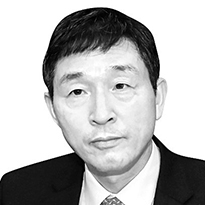Lifting cooperation to a new height

The author is a former Korean ambassador to Vietnam.
Korea’s establishment of diplomatic ties with China and Vietnam in 1992 caused a significant change in the geopolitical and geo-economic landscape. China and Vietnam, although the degrees may differ, became countries that are influential to Korea’s present and future.
In terms of economics, Korea saw gains through good quality labor, low wages and a massive market by establishing diplomatic ties with China. And yet, China has emerged as a competitor through rapid growth backed by speedy technological development, capital accumulation and creation of giant companies with price and technological competitiveness.
After China, whose investment environment is no longer attractive, many Korean conglomerates and mid-size companies entered Vietnam and Korea became its largest investor. Although China is still the largest trading partner of Korea, Vietnam, with a population of 98 million, is now Korea’s fourth largest trading partner after China, the U.S. and Japan.
Establishing diplomatic relations with Vietnam was based on the philosophy of overcoming a bitter past and moving toward a bright future. The Vietnamese government’s decision to not raise the issue of Korea’s participation in the Vietnam War — in which 300,000 Korean troops were deployed over a period between 1964 and 1973 and 5,000 were killed in action — was pragmatic. That contributed to advancing Korea-Vietnam relations after they tied the diplomatic knot.
Of the total trade volume between Korea and 10 members of Asean, the volume between Korea and Vietnam occupies over 40 percent. Korea’s investment in Vietnam also accounts for half of Korea’s total investment in all Asean member countries. It is noticeable that Korea has become the largest investor in Vietnam over Japan, which continued to expand its influence in the Southeast Asian region even after its defeat in World War II.
Not only conglomerates such as Samsung and LG, but also mid-size companies in shoemaking and sewing industries are operating in Vietnam. Over a half of Samsung’s smartphones are manufactured in Vietnam.
This year, we must contemplate what we should do for a sustainable development of Korea-Vietnam relations for the next 30 years. First, we need a high-level routine consultative system to establish a deeper — and more consistent — Korea-Vietnam partnership. We should consider launching annual foreign and commerce ministerial meetings or a two-plus-two meeting of the four ministers (two foreign and defense ministers each). Such meetings are important to expand the cooperative horizon of the two countries and manage risks. A two-plus-two meeting also can offer an opportunity to expand defense cooperation with Vietnam, which mainly uses Russia-built weapons.
Second, we need to offer the kind of cooperation the Vietnamese truly want. Vietnam is the largest beneficiary of Korea’s Official Development Assistance, but now is the time to shift the focus to the support Vietnam actually needs — such as public health systems, construction of infrastructure and research and education facilities — instead of just sharing Korea’s development experience. The time has come to seriously consider Vietnam’s request that Korean companies in the country use more components manufactured by Vietnamese suppliers and transfer some technology.
Third, as part of a strategy for Korea to contribute to Vietnam’s development while seeking its own national interest, it must seek close consultation and cooperation among the U.S., Japan, Australia and Vietnam. When Korea, the U.S., Japan and Australia jointly offer development cooperation with Vietnam or seek plans to enter economic, industrial and technological fields, we will be able to see meaningful outcomes. Vietnam will also welcome a trilateral cooperation among Korea, the U.S. and Japan in strategic industries such as semiconductors, batteries, medicine, the environment, artificial intelligence and infrastructure. It will help the regional expansion of the Korea-U.S. alliance outside the military and security fields and create a positive mood to improve Korea-U.S. relations and Korea-U.S.-Japan-Australia cooperation.
Fourth, we should deepen the friendship between the people of Korea and Vietnam. Vietnam today is completely different from what it was 30 years ago. Its per capita GDP last year was $3,718, 20 times higher than $179 three decades ago. As the country’s power grows, the pride of the Vietnamese people grows as well. Managing the sentiments between the two countries’ is not only the responsibility of the governments but also of the people.
We must learn lessons from the incidents in the past that worsened public sentiment between Korea and Japan and between Korea and China. When small conflicts accumulate, they can grow into a substantial emotional friction. We must show a humble attitude to respect that will make the people of Vietnam befriend the people of Korea.
This year, Korea-Vietnam relations will be upgraded from a strategic cooperative partnership to a comprehensive strategic cooperative partnership. Korea-Vietnam relations are a success story for Korea’s progressive, creative and bipartisan diplomacy — and the story has a larger potential for the future.
Korea and Vietnam accomplished some magic in bilateral developments over the past 30 years. For the magic to continue, the governments and people of the two countries must do their best.
Translation by the Korea JoongAng Daily staff.










with the Korea JoongAng Daily
To write comments, please log in to one of the accounts.
Standards Board Policy (0/250자)